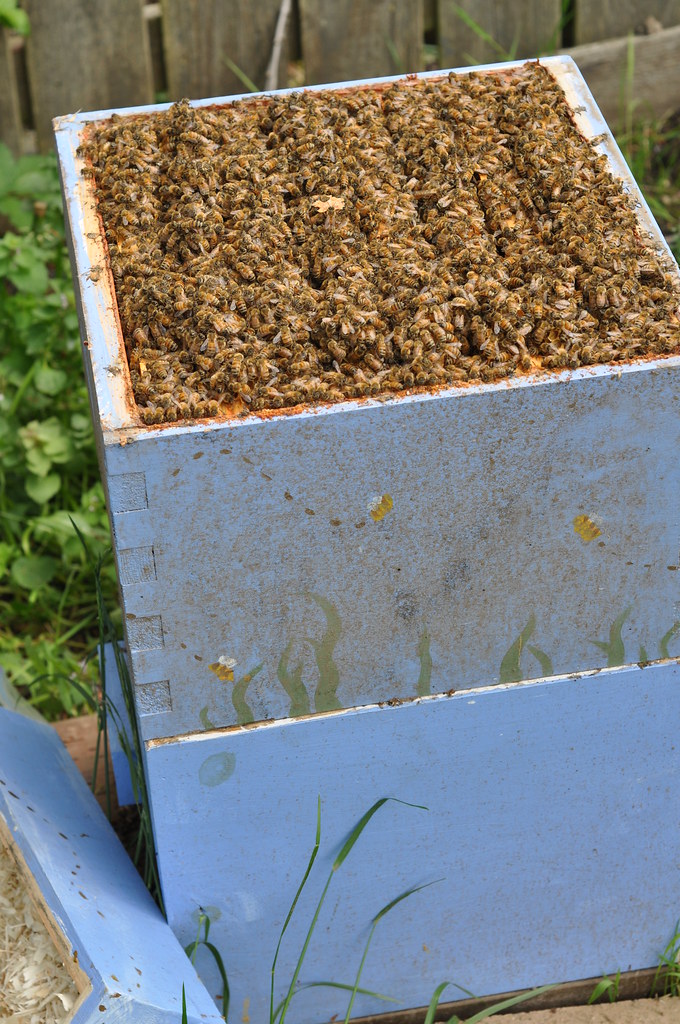We waited for the sun to come out, which fortunately it did on Saturday. The first inspection was on hive 1, which we suspected would be queenless. The bees had been riled up in the first week after the split, and the hive had emitted a distinct hum. Also, in the previous two weeks I had seen bees hanging out on the front of the hive, looking aimless and lazy. All of these are signs of queenlessness.
However, when we opened the hive, we were surprised to find a very full, calm, purposeful, hive of bees who had drawn a lot of comb in the last two weeks.
 |
| That is a full hive, especially after a recent split! Photo by Venessa G. |
Sealed larvae was waiting to hatch, open larvae was present, and workers were bringing pollen in like crazy. These are all signs of a queen-right hive... but how did this transition take place so quickly? We flipped up the bottom box to take a peak, and low and behold, we saw two very distinct, and very empty queen cells, which we had somehow missed during our split attempt.
 |
| See the queen cup, top right? There is another one on the bar to the left- a worker's head is blocking the entrance. Photos by Venessa G. |
At some point after our split, these queens had hatched, had their Hunger Games arena battle, and the victorious queen had already begun laying. We checked out the honey stores while we were in there, and roughly half of the top box was full of honey, which seems adequate for this time of year. We could not believe our luck- the hive we thought was queenless, perhaps in danger of a laying worker, was queenright and thriving. Sweet!
We moved on to hive #2, the one we suspected still had a queen. Before we opened the hive, we peered into the hive window, and saw what appeared to be the queen bee making her rounds. It was only a quick glimpse, but she was elongated compared to other workers, and not as thick as the drones.
Upon opening the hive, we saw a smaller population than in Hive 1, but with plentiful honey stores. We tipped up the bottom of the box to see what was going on, and guess what we saw? Another queen cell, but this time, sealed and not yet hatched. This was truly astounding, because we really thought the queen was in this hive- we were pretty convinced we had just seen her. If so, then this hive in the process of superceding (replacing) their queen. Bees do this for a number of reasons- the queen can be sick, or injured, or she may just not be making as many eggs or queen pheremone as the hive would like. In any case, this hive appears to be on the right track, too. The new queen will hatch, then take her mating flight. The mating flight can be risky- she can get taken out by rain, or by a hungry bird, or a car, or who knows what- but if she makes it back, hive #2 will be back in business soon too. For now, we'll monitor hive 2 and watch for pollen coming in- a good sign that the queen is probably laying, as pollen is the main protein source fed to hatching larvae. We will also probably open the hive up once more to check to see if the queen has in fact hatched, and that the larvae are queen-laid (and not made by laying worker). For now, we are optimistic! What luck we have had with these hives- what could have been a major bumble turned out in the best possible scenario.
No comments:
Post a Comment